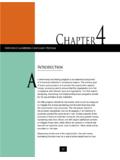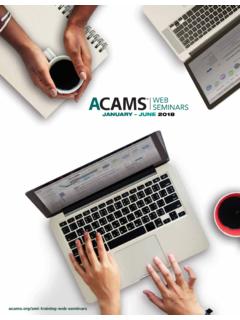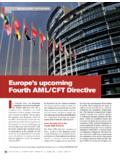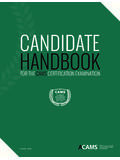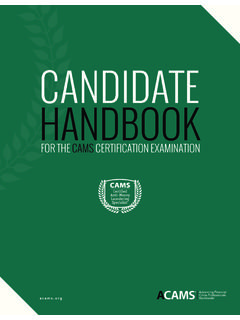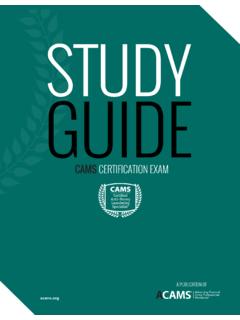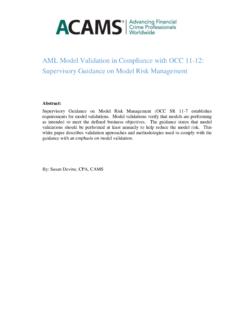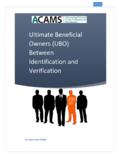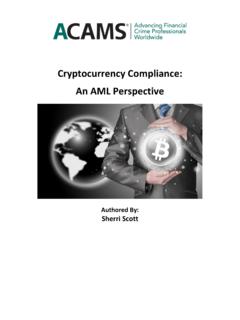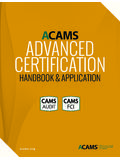Transcription of What is Money Laundering? M
1 132 ChapterWhat is Money Laundering? oney laundering involves taking criminal proceeds and disguising their illegal source in anticipation of ultimately using the criminal proceeds to perform legal and illegal activities. Simply put, Money laundering is the process of making dirty Money look Financial Action Task Force (FATF) is a Paris-based multinational or inter-governmental body formed in 1989 by the Group of Seven industrialized nations to foster international action against Money laundering . According to FATF, crimes such as illegal arms sales, narcotics trafficking, smuggling and other activities of organized crime can generate huge amounts of proceeds.
2 Embezzlement, insider trading, bribery and computer fraud schemes can also produce large profits, creating the incentive to legitimize the ill-gotten gains through Money a criminal activity generates substantial profits, the individual or group involved must find a way to use the funds without drawing attention to the underlying activity or persons involved in generating such profits. Criminals do this by 1 ,3343,en_32250379_32235720_33659613_1_1_ 1_1, # and Methods of Money laundering and Terrorist FinancingM14 Study Guide for the CAMS Certification Examinationdisguising the sources, changing the form or moving the Money to a place where it is less likely to attract United Nations 2000 Convention Against Transnational Organized Crime, also known as the Palermo Convention, defines Money laundering as.
3 2 The conversion or transfer of property, knowing it is derived from a criminal offense, for the purpose of concealing or disguising its illicit origin or of assisting any person who is involved in the commission of the crime to evade the legal consequences of his actions. The concealment or disguising of the true nature, source, location, disposition, movement, rights with respect to, or ownership of property knowing that it is derived from a criminal offense. The acquisition, possession or use of property, knowing at the time of its receipt that it was derived from a criminal offense or from participation in a of FATF s early accomplishments was to dispel the notion that Money laundering is only about cash transactions.
4 Through its several Money laundering typologies exercises, FATF has shown that Money laundering can be achieved through virtually every medium, financial institution or important concept in the definition of Money laundering is knowledge. In all three of the bullet points mentioned above, we see the phrase ..knowing that it is derived from a criminal offense. Generally, a broad explanation of knowledge is used for the definition of Money laundering . FATF s 40 Recommendations on Money laundering , its 9 Special Recommendations on Terrorist Financing and the 3rd European Union Directive on the Prevention of the Use of the Financial System for the Purpose of Money laundering and Terrorist Financing state that the intent and knowledge required to prove the offense of Money laundering includes the concept that such a mental state may be inferred from 2 Article 6, UN Convention Against Transnational Organized Crime, 15 November 2000.
5 15 Risks and Methods of Money laundering and terrorist financing objective factual circumstances. In a number of jurisdictions, the term willful blindness is a legal principle that operates in Money laundering cases. Courts define willful blindness as the deliberate avoidance of knowledge of the facts or purposeful indifference. Courts have held that willful blindness is the equivalent of actual knowledge of the illegal source of funds or of the intentions of a customer in a Money laundering October 2001, FATF expanded its mandate to cover the financing of terrorism.
6 Whereas funds destined for Money laundering are, by definition, derived from criminal activities, such as drug trafficking and fraud, terrorist financing may include funds from perfectly legitimate sources used to finance acts of terrorism. Concealment of funds used for terrorism is primarily designed to hide the purpose for which these funds are used, rather than their source. Terrorist funds may be used for operating expenses, including such things as paying for food, and rent, as well as for the actual terrorist acts.
7 Terrorists, similar to criminal enterprises, covet secrecy of transactions and access to funds. Both terrorists and Money launderers use the same methods to move their Money in ways to avoid detection, such as structuring payments to avoid reporting and underground banking, such as the ancient system of will discuss terrorist financing later in this Stages in the Money laundering CycleMoney laundering often involves a complex series of transactions that are usually difficult to separate. However, we generally consider three phases of Money laundering : Step One: Placement The physical disposal of cash or other assets derived from criminal activity.
8 16 Study Guide for the CAMS Certification Examination During this initial phase, the Money launderer introduces the illegal proceeds into the financial system. Often, this is accomplished by placing the funds into circulation through financial institutions, casinos, shops and other businesses, both domestic and international. This phase can involve transactions such as: Breaking up large amounts of cash into smaller sums and depositing them directly into a bank account. Transporting cash across borders to deposit in foreign financial institutions, or to buy high-value goods such as artwork, antiques, and precious metals and stones that can then be resold for payment by check or bank transfer.
9 Step Two: Layering The separation of illicit proceeds from their source by layers of financial transactions intended to conceal the origin of the proceeds. This second stage involves converting the proceeds of the crime into another form and creating complex layers of financial transactions to disguise the audit trail, source and ownership of funds. This phase can involve transactions such as: Sending wire transfers of funds from one account to another, sometimes to or from other institutions or jurisdictions. Converting deposited cash into monetary instruments ( traveler s checks).
10 Reselling high-value goods and prepaid access/stored value products. Investing in real estate and legitimate businesses. Placing Money in investments such as stocks, bonds or life insurance17 Risks and Methods of Money laundering and terrorist financingSource: United Nations Office on Drugs and Crime ( )A Typical Money laundering SchemeDirty Money Integrates into the Financial System Collection of Dirty MoneyBankTransfer on the Bank Account of Company X XPurchases of Luxury Assets, Financial Investments, Commercial/Industrial InvestmentsOffshore BankWire TransferLoan to Company Y Payme nt b y Company Y o f False In voi ce to Company X YIntegrationPlacementLayering18 Study Guide for the CAMS Certification Examination Using shell companies or other structures whose primary intended business purpose is to obscure the ownership of assets.
